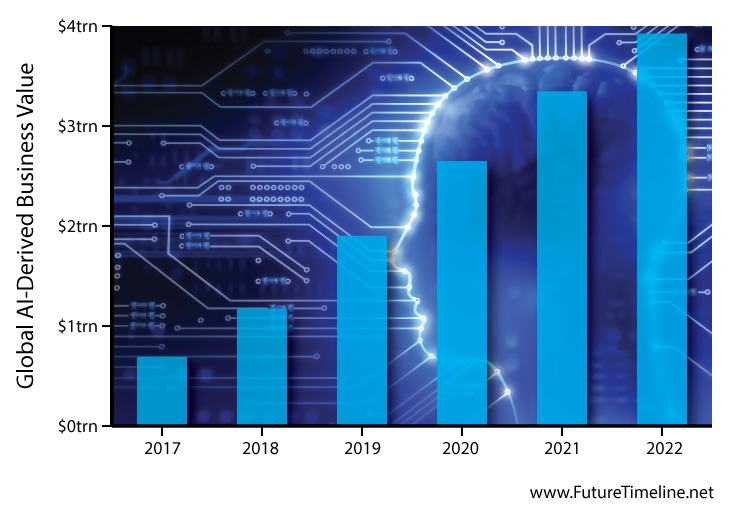
15th May 2018 AI will triple in value globally by 2022 The business value of artificial intelligence (AI) will more than triple globally by 2022, according to a new report from industry analysts Gartner.
The business value derived from AI is projected to total $1.2 trillion globally in 2018 – an increase of 70% from 2017 – according to Gartner, a U.S. research and advisory firm providing information technology-related insight to business leaders around the world. This figure is forecast to reach $3.9 trillion in 2022. In its report, Gartner identifies three different sources of AI business value: • Customer experience: The positive or negative effects on indirect cost. Customer experience is a necessary precondition for widespread adoption of AI technology to both unlock its full potential and enable value. "AI promises to be the most disruptive class of technologies during the next 10 years – due to advances in computational power, volume, velocity and variety of data, as well as advances in deep neural networks," explains John-David Lovelock, research vice president at Gartner. "One of the biggest aggregate sources for AI-enhanced products and services acquired by enterprises between now and 2022 will be niche solutions that address one need very well. Business executives will drive investment in these products, sourced from thousands of narrowly-focused, specialist suppliers with specific AI-enhanced applications." "Deep neural networks allow organisations to perform data mining and pattern recognition across huge datasets not otherwise readily quantified or classified, creating tools that classify complex inputs that then feed traditional programming systems," said Mr. Lovelock. "This enables algorithms for decision support/augmentation to work directly with information that formerly required a human classifier. Such capabilities have a huge impact on the ability of organisations to automate decision and interaction processes. This new level of automation reduces costs and risks, and enables, for example, increased revenue through better microtargeting, segmentation, marketing and selling." Virtual agents (such as chat bots and voice recognition) can reduce labour costs as they take over simple requests and tasks from a call centre, help desk and other service staff, while handing over the more complex questions to their human counterparts. They can also provide uplift to revenue, as in the case of roboadvisors in financial services or upselling in call centres. As virtual employee assistants, virtual agents can help with calendaring, scheduling and other administrative tasks, freeing up employees' time for higher value-add work and/or reducing the need for human assistants. Agents account for 46% of the global AI-derived business value in 2018, but will account for only 26% by 2022, as other AI types mature and contribute more business value. Decision automation systems use AI to automate tasks or optimise business processes. They are particularly helpful in tasks such as translating voice to text and vice versa, processing handwritten forms or images, and classifying other rich data content. Unstructured data and ambiguity are a staple of the corporate world and decision automation – as it matures – will bring tremendous business value to organisations. For now, decision automation accounts for just 2% of the global AI-derived business value in 2018, but it will grow to 16% by 2022.
Comments »
If you enjoyed this article, please consider sharing it:
|







